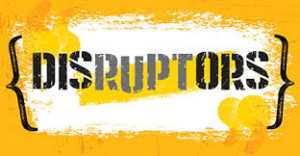How Our 2020 Experience Was
Not So Unusual
Dear Springboard,
Wow! What a year. There have been so many changes, I don’t know which end is up. When will this ever end?
Sign me,
Ready for a Refreshed 2021
Dear Ready,
Yes, it has been quite a year.
The depth, breadth and sustained impact of the pandemic is clearly an outlier. A Black Swan.
But. . . the change that has been thrust upon us, admittedly extreme and more intense (the dumpster fire that is 2020!), is a version of the regular change occurring in our lives already and with more to come.
Many of us are living through is what author Bruce Feiler would call a life quake. But I’m getting ahead of myself.
First, a few statistics about the current state of the world of work. Feiler reports:
- The average worker will have 12 different jobs before age 50
- Those with higher education will have 15 jobs and change their skill set three times
- It’s estimated that half of American workers are at risk to losing their job to automation
In his book, Life is in the Transitions, Feiler reports on his extensive research and analysis of detailed one-on-one interviews with 225 people about their life stories.
One of his main messages is that life stories are not linear as many imagine and expect
Life does not progress from one predictable life stage to another on a tidy schedule.
For some the patterns of a linear life do occur: such as, adulthood, marriage, children, empty nest, grandchildren and retirement.
But for many, they do not experience all these stages or in that sequence, or on an anticipated schedule. This same nonlinearity occurs in other domains of our lives.
What happens?
We experience what Feiler calls disruptors. These are changes that throw off the equilibrium of our lives. They mostly involve change – marriage, births, death, illness, starting and losing jobs.
Among the 225 life stories he heard, Feiler identified 52 different disruptors across five categories – beliefs, body, identity, love and work.

Looking for patterns, Feiler and his team analyzed the content of his interviews very systematically. He discovered:
- As adults we will face an average of 35 disruptors in our life
- This means on, average, we are experiencing one every 12 to 18 months
Of course, disruptors don’t occur in any predictable way and, what’s more, they can lead to life quakes.
Feiler defines a life quake as a “forceful burst of change in one’s life that leads to a period of upheaval, transition and renewal.”
Life quakes are more destabilizing and disorienting than disruptors.
A disruptor can become a life quake if it occurs at a time of particular vulnerability; occurs at the end of a long list of disruptors and is the last straw; or, if there is a cluster of disruptors and it has the impact like a pile up of many cars.
“It’s as if our immune system becomes compromised by one disruptor so that when one, two or three come along, our entire identify gets the flu,” writes Feiler.
One big impact of a life quake is that is causes us to revisit our life story. A part of meaning making is adjusting our life stories to accommodate a new life reality.
Feiler found that 87% of life quakes were personal and 13% were collective – like 911 or the 2020 pandemic broadly impacting many.
People typically experience between three and five life quakes. Given that 75% of life quakes take at least four years to weather, it means a big portion of our lives is in a state of significant transition.
How to manage all this?
Change models generally include three phases: a leaving, a transition period, and a new beginning.
Feiler identified seven different tools people used to help them get through their life transitions and found they fell into the three phases as outlined below.
Leaving
- Accept it – identify your emotions, cease resisting
- Make it – ritualize to make the change; rituals help us process change
Middle Period
- Shed it – give up old mindsets, make room for new ideas
- Share it – seek wisdom from others, socialize the process for feedback and input
New Beginning
- Launch it – unveil your new self
- Tell it – compose a fresh story
A last tool: Create it (try new things) can occur
at any and all of the stages
The overriding message is that while most of us still hold on to the expectation that our lives will unfold in some linear way, they likely will not.
We shouldn’t be surprised or despair. In fact, we can expect disruptors and life quakes to throw us off balance, to invite us to question our lives, and to reinvent ourselves with refreshed priorities and purpose.
Broad and accelerating change is our current reality and we can expect more. AI and global warming alone will instigate more dislocations.
While never stated explicitly in his book, I take away the critical importance of being agile and all that that means.
There is power in accepting the changes, understanding the structure of transitions, and engaging with the tools.
That surrendering will give us a leg up to thrive.
From the Watercooler
springboard

